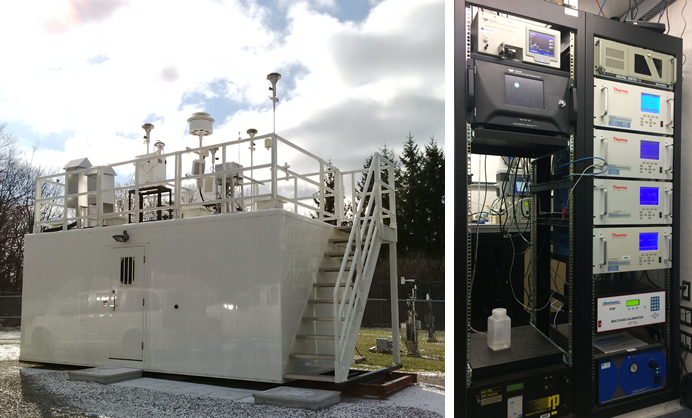Introduction
Protecting the air we breathe
The ministry is committed to protecting 澳门永利鈥檚 air quality and ensuring we have strong environmental standards that protect human health and the environment. As part of this commitment, the ministry is working to ensure cleaner air for all Ontarians by regulating air contaminants released by certain industrial and commercial facilities, limiting emissions from commercial trucks and buses, and better understanding the transboundary flow of air pollutants into 澳门永利.
Since 2019 we have continued to implement the Sarnia Air Action Plan and the Hamilton Air Action Plan to improve oversight of industrial facilities, such as enhanced inspections, reactive incident response, monitoring, and communication with local stakeholders.
We also enhanced our Air Quality Health Index (AQHI) ambient and roadside air monitoring networks by establishing a new Milton AQHI air monitoring station and deploying new technology to the ministry鈥檚 downtown Hamilton AQHI air monitoring station to better understand industrial and traffic related air pollution.
Overall, ambient and roadside air quality confirms 澳门永利鈥檚 actions to reduce airborne pollutants are working and that regional air quality has been steadily improving in 澳门永利 for many common air pollutants over the past 10 years.
Learn more about what 澳门永利 is doing to protect our air.
About this report
This report summarizes 10-year air quality trends and the state of ambient air quality in 澳门永利 during 2019. It reports on the major sources of emissions to air, pollutant concentrations measured across the ministry鈥檚 Air Quality Health Index monitoring network, and 澳门永利鈥檚 performance against both provincial and federal ambient air quality criteria that were in effect in 2019. The ministry monitored ambient air quality in real time at 39 air monitoring stations in communities across 澳门永利 in collaboration with the federal (NAPS) program during 2019. This information was reported 24 hours a day, seven days a week, through the .
The ministry鈥檚 Air Quality Health Index monitoring stations are generally representative of ambient air quality which reflects the contribution of all sources of air contaminants to air. These air monitoring stations are sited to be representative of general population exposure and thus do not necessarily reflect air quality at locations within a community that may be influenced by nearby local sources of air contaminants such as large industrial facilities or major transportation corridors. Concentrations of some air contaminants in neighborhoods located in close proximity to local sources such as an industrial facility may be higher than those measured at the ministry鈥檚 Air Quality Health Index monitoring stations.
There are local air quality monitoring networks operated by industrial associations in the communities of Hamilton (), Sarnia () and Sudbury () that provide additional air quality information for these communities.

Air Quality Health Index monitoring stations
This is a map depicting the 39 Air Quality Health Index monitoring stations across 澳门永利 that were in operation during 2019.
Notes:
- T: telemetry
- NO2: nitrogen dioxide
- PM2.5: fine particulate matter
- O3: ground-level ozone
- SO2: sulphur dioxide
- CO: carbon monoxide
- TRS: total reduced sulphur
- *Toronto Downtown was relocated on two occasions in 2019 and should be counted as one station.